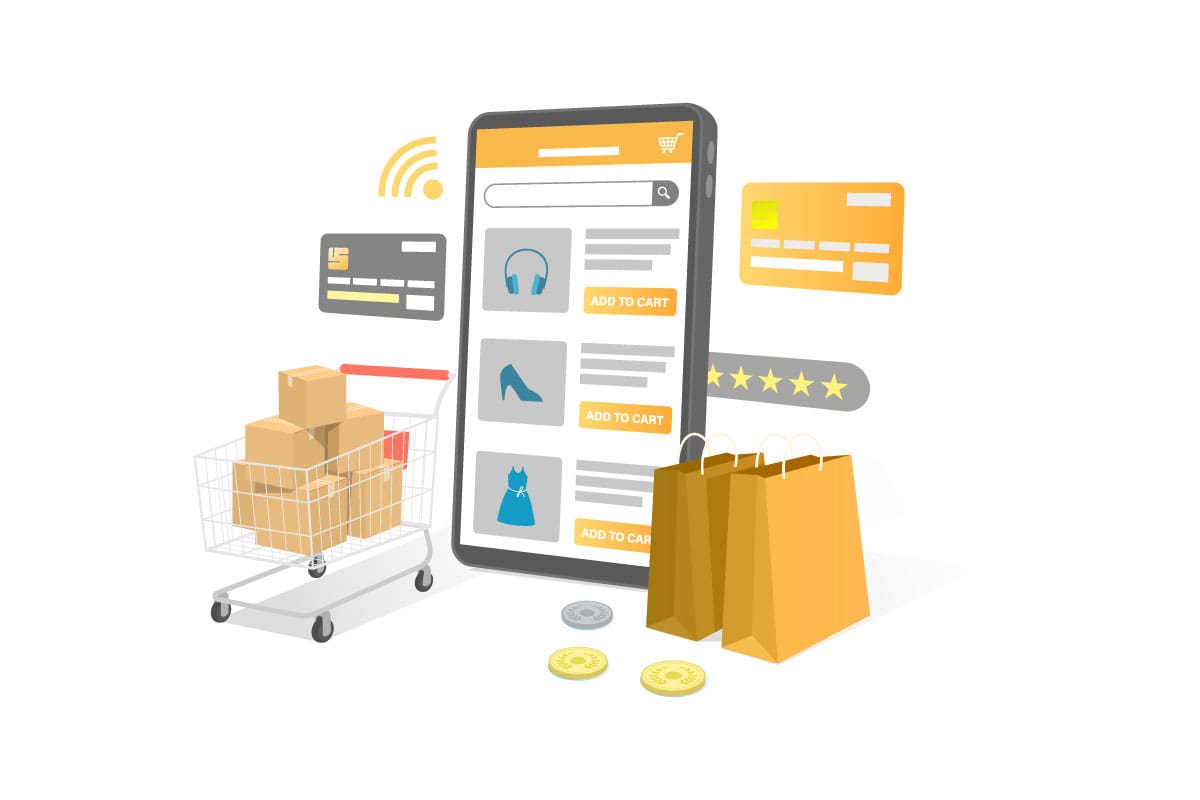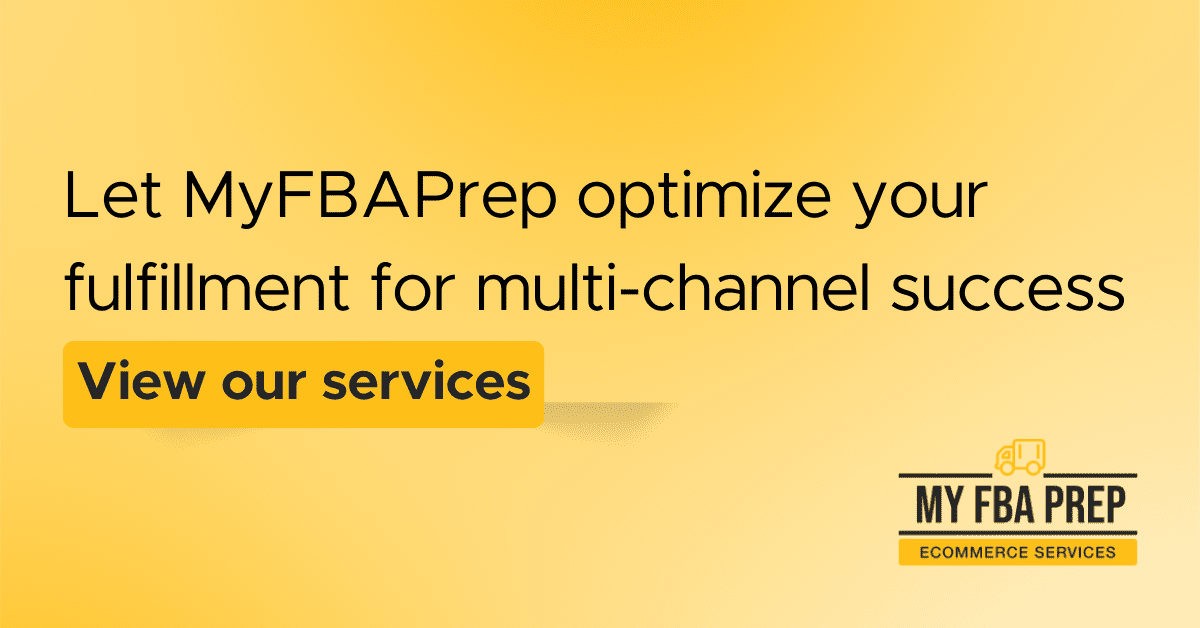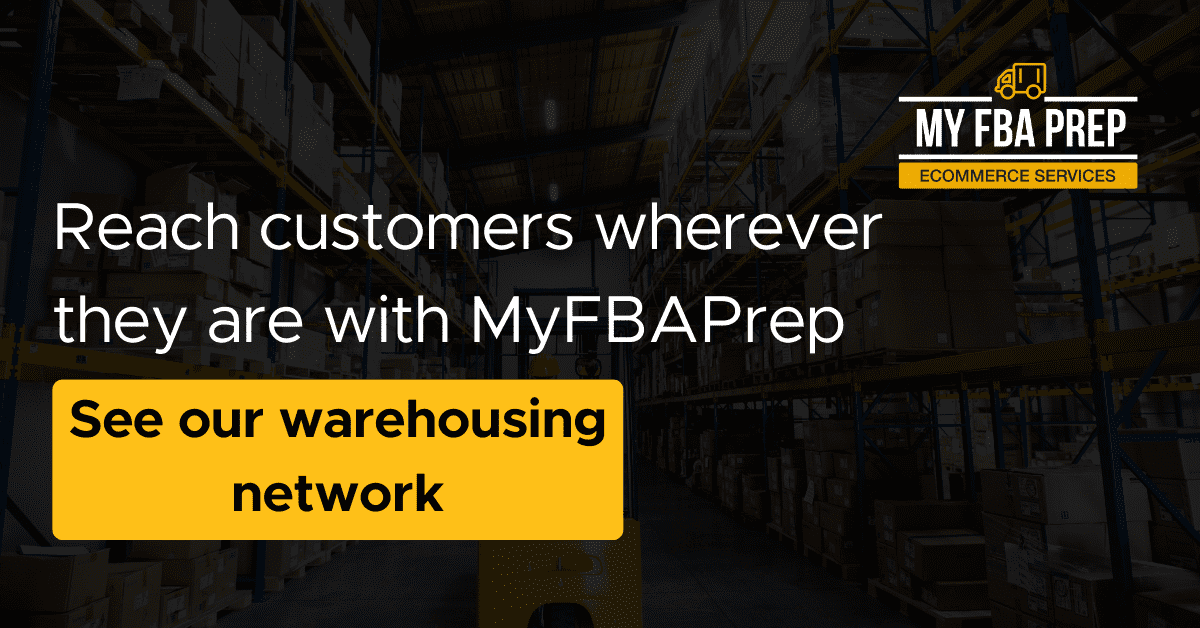
How to Optimize Fulfillment Efforts Across Retail and Online

This is a guest post from Alex Senn. Alex is the CEO of SKUSavvy, a mobile warehouse and fulfillment management platform for modern brands to maintain inventory, streamline fulfillment, and continually push the envelope of what a small to medium-sized brand can do within their fulfillment centers.
For most merchants, it’s easy to operate in one channel and achieve success. The challenge comes when you attempt to optimize your fulfillment efforts through your retail store, online store, and any other channels and marketplaces you maintain. This is a complex task, and finding the right solutions to address the challenges involved requires diligent research.
According to Multi-Channel Merchant, up to 91% of merchants follow an omnichannel approach in their retail business. This means a majority sell on multiple channels. Since so many merchants in the retail category are relatively new to selling across retail and online channels, it’s no surprise optimizing for those channels has them scratching their heads.
In this post, we’ll look at a few ways store owners can take advantage of their physical space to get more out of fulfilling orders from multiple channels. Since around 2010, we’ve seen a steady rise in “buy online, pick up in store” offerings, fulfillment from stores, and online order fulfillment infrastructures used to supplement store stock. These concepts are more complicated than they seem though.
Fulfillment methods you can adopt
With consumer preferences shifting toward having more options, we’ve listed some fulfillment methods you should consider providing your customers. Each one is appropriate for different situations and brings varying advantages. If you don’t offer one or more of these services, consider introducing them with the right software, such as SKUSavvy.
Traditional fulfillment center
At the heart of an online-focused eCommerce business is its fulfillment center. Most eCommerce fulfillment centers have a layout that uses a storage area with pallet racking, a pick area with shelves accessible to pickers, fulfillment stations that package orders and attach shipping labels with the correct items inside, and inbound/outbound areas for product and order staging.
Given this traditional layout, it is clear to see why you would want to optimize your fulfillment center first. It’s also possible your retail store will send stock to your fulfillment center for getting those orders out, as the setup makes it far easier to do this than out of a back-room in the store.
This happens in cases that the fulfillment center doesn’t have stock but your storefront does and rather than splitting the fulfillment in two, a brand will opt to cross-dock inventory to their fulfillment center so the order can go out as a complete shipment.
Retail fulfillment
It can get expensive to maintain a large warehouse for in-house fulfillment, so it’s understandable why many large-format retailers are converting a portion of their store into what has become known as a micro-fulfillment center.
In this fulfillment strategy, you operate a traditional retail store and also have the ability to route orders from online channels to this location for fulfillment. The store has a similar, though smaller warehouse layout, but your processes will still be more efficient than if you went into the store to pick orders. It’s a popular method to optimize your fulfillment efforts across retail and online due to the speed of shipment and the reduced costs.
Utilize this method when you have your fulfillment warehouse centrally located across the country and your retail store located in a dense urban area. The fulfillment center will cover the majority of your orders while the retail store will handle online orders who choose to pick up at the store, or if you are going to offer your own local delivery from the store, or to route the orders within a certain radius from the store to lower shipping costs.
Buy online, pick up in store (BOPIS)
In this fulfillment method, a consumer makes an order through your online store and selects a retail location within driving distance (set according to your availability) to pick it up.
You receive the order at the store location, and the store will pick and pack the order, then alert the customer that it’s available for pickup.
This has become a popular method for fulfillment for the convenience it offers customers. That said, it is complex and requires an advanced eCommerce system to set it up. In addition, if your store maintains a healthy volume of orders, it can add extra work to get them ready for fulfillment.
Local delivery
Another relatively new concept in retail is local delivery. This has become popular thanks to the software systems Shopify and other order routing companies offer, so it’s feasible to pursue this method without relying on UPS or FedEx. However, it’s more complex than BOPIS or regular fulfillment because there are more elements that need to come together to make it happen.
For perishable goods or an active market within the local region, this can be a great way to connect directly with customers and cut down on shipping costs (assuming you can cover the costs of a truck and a delivery driver).
Start with a robust warehouse management solution (WMS), which will save you countless hours in fulfillment. You’ll need to differentiate local delivery orders, pickup orders, and order shipments.
Then, you’ll need to pick and pack according to the delivery route, so your picking should be based on zip code or city, then picked so the last order is loaded first, and you need to establish a way to prove delivery.
All of these add complexity. Fortunately, there are ways to optimize the fulfillment process even with local delivery routes as part of your retail options or fulfillment center offering.
Third-party fulfillment
An increasingly popular method of fulfilling orders is to use a third-party logistics (3PL) provider. In this method, you send products to a fulfillment center to store the goods, accept orders, pick and pack, and ship those orders. As a helpful tip, make sure your partnered service offers an app that connects with your channels so that orders you don’t plan to fulfill yourself are routed to your 3PL.
If you’re considering a 3PL but don’t know where to start, we have tons of resources in this blog. You can also reach out to 3PL experts to receive a quote and work together to come up with the right program according to your products, packaging, and shipping schedule.
Optimize fulfillment for simplicity
In this section we’ll go through a few ways you can optimize your fulfillment for simplicity while selling across retail and online channels.
Doing the simplification across retail and your fulfillment warehouse can be thought of as the physical part such as warehouse layout, store fulfillment shelving, fulfillment station optimization, and the software/metrics side of things. The software side might involve slightly different order routing rules, switching the most important metric to optimize for, and utilizing other systems to accomplish specific tasks easier.
Although it sounds challenging, adjusting your warehouse layout, or creating that micro-fulfillment center in the back of your store can go a long way toward optimizing your fulfillment.
Centralize operations
Typically, you’ll get the most bang for your buck by centralizing operations at the fulfillment center. Here a business will use its fulfillment center to handle almost all order fulfillment and leverage its retail stores as the face of its brand. Here are a few ways to centralize operations:
1. Batch similar tasks
Batching improves efficiency by putting similar tasks together to avoid switching costs associated with different tasks. You can batch tasks such as checking in products, putting items away, order picking, and fulfillment.
2. Data access
You can save a lot of time by having one system manage data for multiple business aspects to limit movement across systems.
For instance, if you are using a WMS such as SKUSavvy it should hold all information related to inventory and warehouse operations as opposed to relying on say Quickbooks for some product location information and SKUSavvy for other product location information. Keeping data centralized, even if you have multiple pools of data will help streamline employee operations and provide structure for which data should be accessed and changed within that system.
3. Employee roles
Similar to batching tasks, make sure individual employees focus on one task within one area of the warehouse. One of the biggest enemies of warehouse productivity is employees having to walk around large sections of the warehouse in search of items to pack. So, centralize tasks in a specific area to gain large efficiencies.
For instance, in a small warehouse, you should have one employee focused solely on product replenishment whose only job is to make sure the pick bins are always filled with product. Another employee should only be focused on picking, and a third group will only be focused on put-away instead of having these three groups go back and forth between these tasks.
Warehouse layout
The layout of your warehouse is important to optimize your fulfillment efforts across retail and online channels. Thankfully, there are entire organizations dedicated to warehouse setup and optimization. At MyFBAPrep, we’ve already done the work of setting up an optimized warehouse network. If you run your own warehouse, however, here are some tips we use to ensure smooth operations.
1. Use appropriate racking & shelf units
Many companies skimp on proper racking, which ends up causing problems. If you invest in quality racks and shelving, you won’t have to take inventory off shelves, move shelves, then move inventory back onto shelves. Here are some general tips about storage units:
- You should have enough storage rack to hold a minimum of a full lead time’s worth of your best-selling items. So, by the time an order placed with a vendor arrives, your holding stock should be almost zero. This is more important for your top 20% of items by sales volume and less important for B- or C-grade items that only make up 5%–10% or less of your sales.
- Design a layout that leverages the space and encourages simplicity of movement. For example, you might have your holding stock racks closest to the inbound area so items can be checked in quickly and allocated to racks. You should have your top 20% products as close to the pick racks as possible so it takes less time to replenish the pick stock bins.
- The flying V warehouse layout generally works best for a space, as it offers clear visibility of each aisle from one central point.
- Set up replenishment from bin to bin so that, as you pick through the oldest stock in the easiest accessible locations, you’ll automatically be alerted to bring over holding stock to a certain pick bin so that picking flows remain uninterrupted.
- If you have a product that can flow on racks as a single unit, invest in flow tracks that sit next to the fulfillment stations. This works well for low-SKU-count businesses and those with small products.
2. Use larger labels, QR codes, and bright signage
This is a simple, but important recommendation. If you have bins with tiny labels, products that lack barcodes or rows, and aisles with illegible numbers to identify them, you need to make a change to eliminate mistakes.
Make it easy to scan the bin label with large bin barcodes. If one is scraped off, alert your team immediately to fix it so the warehouse remains clean and efficient. Meanwhile, bright, big signs within aisles will help new and current employees by clearly displaying where to go.
MyFBAPrep uses the latest in barcoding and sign recognition through our WMS to optimize warehouse operations. When using a WMS like SKUSavvy, you receive a mapped layout within the system to facilitate location navigation and printing of signage.
3. Keep fulfillment stations simple and concentrated
Your packers should have everything they need within easy reach. Try to limit the box sizes you package with. This makes it easier to select the correct box, and reduces the number of packaging materials you have to stock.
Printers, tape, barcode scanners, and other necessary tools should be in close proximity to the fulfillment stations. A good WMS will provide box size suggestions and shipping options to determine the correct size for your business.
Route orders efficiently based on location
If you operate across both a retail and a warehouse environment (or multiple), you need to be able to route orders efficiently to their respective fulfillment locations.
Buy online, pick up in store orders should be sent to the closest location with a pick ticket and packaging so it can be assembled and wait at the correct location. You can allocate orders within Shopify or on the WMS side of it to see where the order is expected to be fulfilled.
When you optimize your fulfillment effort across retail and online, you’ll likely run into scenarios where the product is available in only one channel or location, or one location has part but not all of the order in stock.
These issues extend to fulfillment as well: For example, “buy online, pick up in store” may be offered for a product at a certain location, but not others. This requires strategic order routing to prevent bottlenecks and ensure prompt delivery to customers. Routing orders according to location avoids incorrect deliveries and negative reviews from buyers — both of which incur heavy costs to your business.
Some ways we’ve seen orders routed include:
- Scenario 1
- Online order + shipping = fulfillment center order routing
- Scenario 2
- Online order + shipping and missing a product at the fulfillment location
- For large items 16 and over inches, hold until the rest of the inventory is in stock
- For small items, two shipments
- Cross-dock from another fulfillment center overnight
- Online order + shipping and missing a product at the fulfillment location
- Scenario 3
- BOPIS order missing product at the fulfillment location
- If the second location (FC) with a missing product is not within the set radius, it’s not allowed on the storefront
- BOPIS order missing product at the fulfillment location
- Scenario 4
- Online order for five units, with three available in one place and two in another
- Under 16 inches, the order is split and fulfilled from two different locations, depleting the respective inventory amounts at each location
- Online order for five units, with three available in one place and two in another
Wrapping up — Hone your fulfillment efforts to accommodate retail and online sales
With the right strategy and some elbow grease, you can refine your fulfillment efforts to handle both retail and online sales channels. The methods we’ve discussed combined with helpful software and tooling will lessen the challenge.
The more you invest in learning how to operate and streamline these channels, the easier it will be to keep up with the industry standard, stay competitive, and increase profitability. Take the simple steps so you and your team can optimize the fulfillment process across different channels and fulfillment methods, leading to lower costs, satisfied customers, and overall more revenue.
SKUSavvy connects with your order channels and other software systems to keep track of each bin location, product barcode, and shipping setting, as well as to facilitate your pick-pack-ship process to maintain efficient pick routes, and order batching and routing, as well as replenishment. Start with your first 50 orders free, then pay just $0.10–$0.19 per order. Add unlimited employees, channels, warehouses, products, and customers with a faster time to implement than other systems and a lower cost of ownership.



